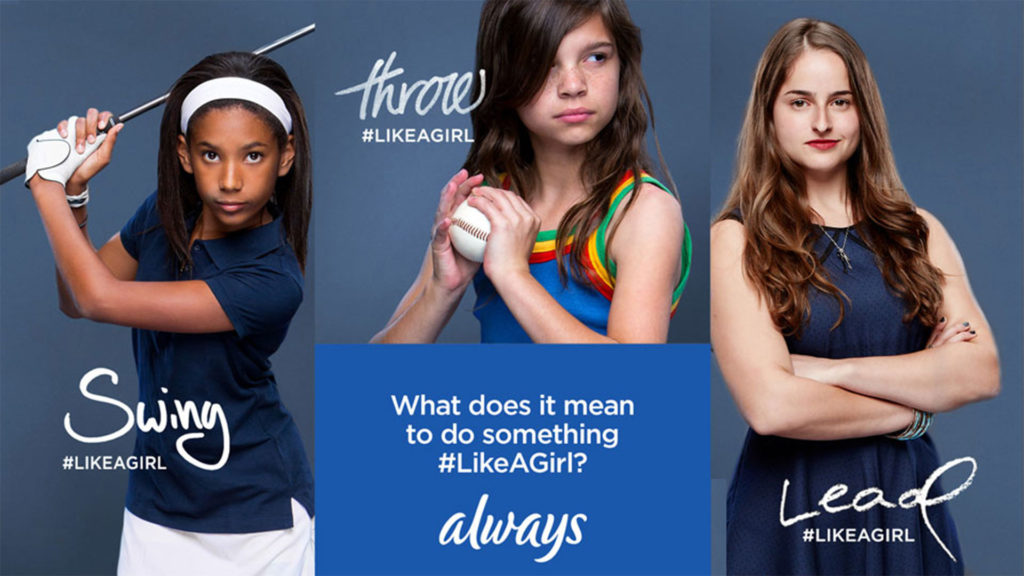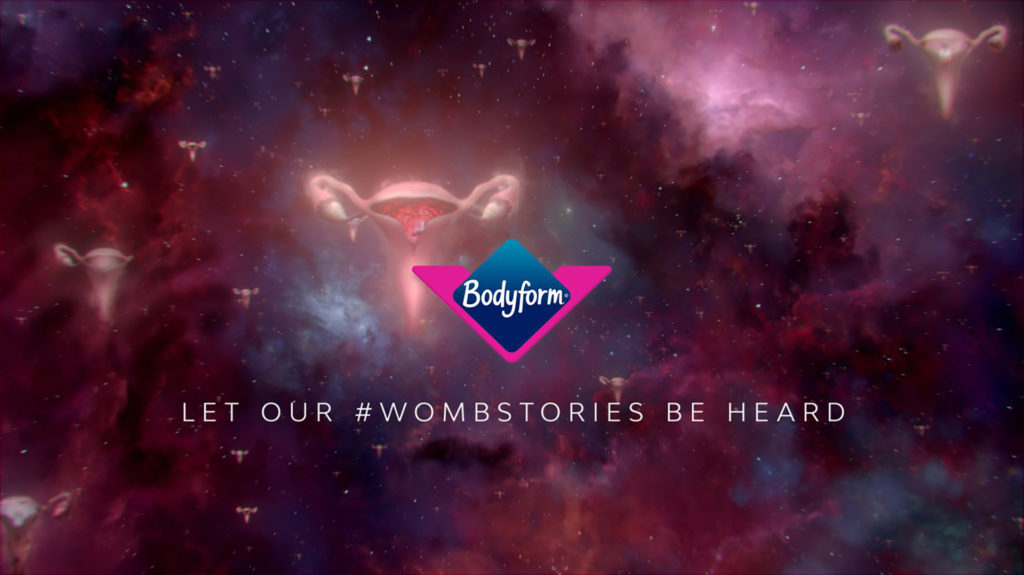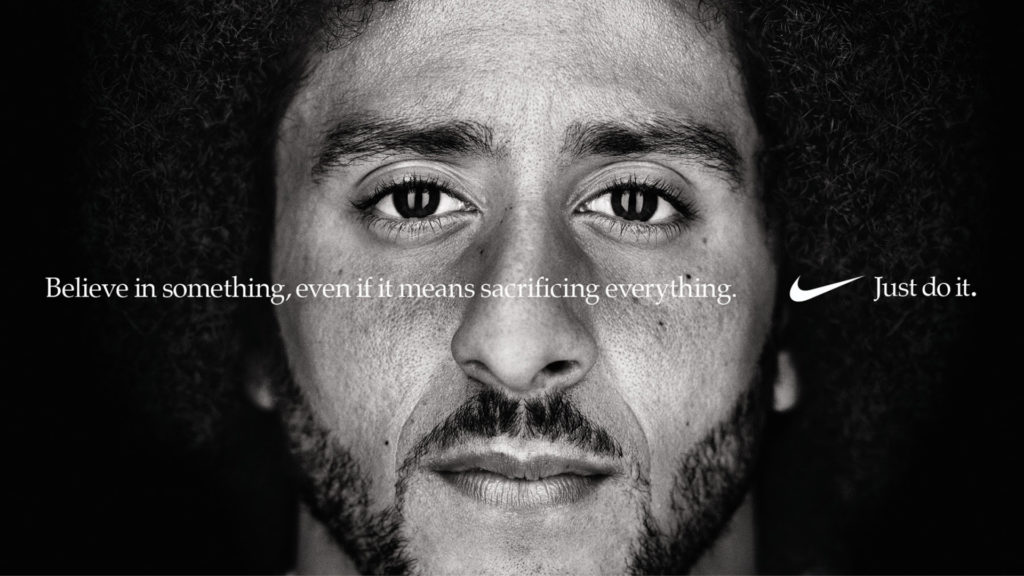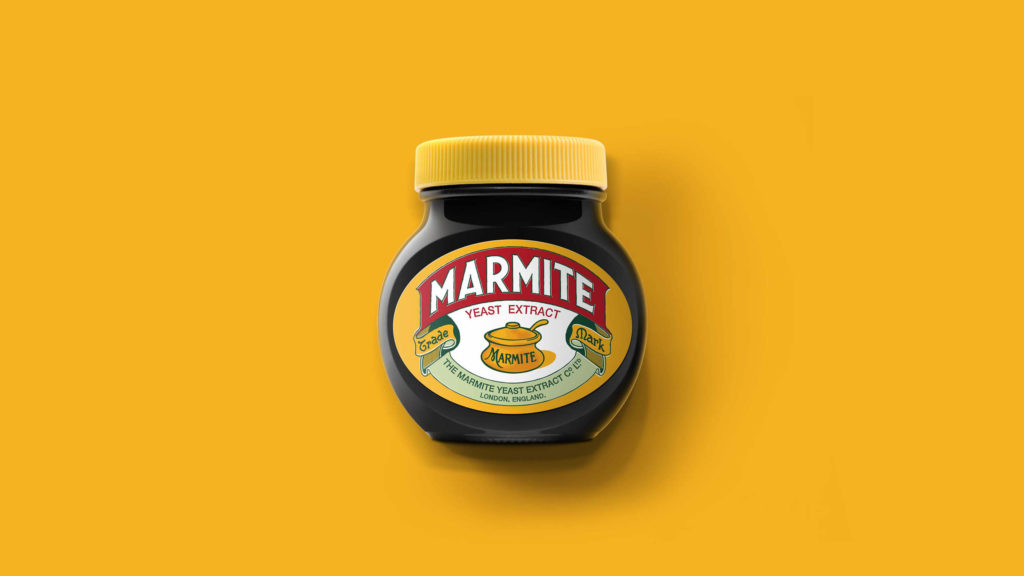There is no doubt that brand positioning is extremely important. It is how you are geared to speak to the world; what you have to say and importantly how you want to say it. It is how you want to distinguish yourself from your competitors and the way in which you intend to occupy a meaningful place in consumers’ minds.
A good brand positioning is therefore the solid foundations in the fight for relevance.
And it can help in three big ways:
Take female hygiene products. A pretty functional commodity product but Always and Bodyform have both leveraged their distinct positionings to make their respective brands more widely relevant.
- It adds emotion and edge to a commodity product
Always have honed in on the insight that young girls lose confidence as they hit puberty due to societal views on gender stereotypes. This emotion is relevant to the target as they start their periods and taps into a wider cultural truth which we see come to life in their award-winning ‘Like a Girl’ campaign. A positioning that says we are a brand that cares and a brand that will challenge stereotypes ingrained in society to help drive confidence.

A step further, Bodyform recognised that telling women to be confident wasn’t enough. They needed to break the taboos in society which made them feel less confident in the first place. The ‘Blood Normal’ campaign reflected this positioning by actively challenging period shame, being the first advertising to use real blood and talking (a lot) about the vulva. This has been followed by their latest ad #wombstories which confronts the (mostly unspoken about) aspects of the female experience both good and bad from infertility to pregnancy and menopause.
What both these examples show us is that a strong positioning centred around a big cultural issue is a powerful strategy to ensure your brand wins on relevance. Breaking female stereotypes or challenging societal taboos are not short-term trends they have jumped on, they are bigger conversations that have given both brands their edge.

- It ensures consistency, making you more salient and iconic over time
It can sound counterintuitive to say that sticking to what you have always done helps drive relevance:
“Surely the new and exciting is where we need to be heading. In the direction of change, following trends and what is happening over there…”
But actually, being consistent in your positioning keeps you relevant over time and helps people to instantly recognise, understand and identify with your brand.
That is not to say that it can’t evolve to stay relevant, but it is more about fine tuning rather than starting again.
Let’s look at two examples:
Nike’s positioning and mission is to bring inspiration and innovation to (every!) athlete in the world – it is focused, timeless, emotionally-charged and also bigger than sport, as it is about grit and the determination to overcome challenges.
Their mission has been the same for a long time. However, what does change is the tactics they employ to keep this positioning relevant today and in the future – the channels, the athletes, the sports, the movements it supports etc.

But what about an everyday product…
One of our favourite brands at Brandon has to be Marmite. The famous slogan ‘you either love it or hate it’ was conceived in the 90s but is still just as strong and as powerful today, with executions of the campaign playing into popular culture and the mood of the nation.
And beyond the slogan (as positioning is more than just a slogan), the pack format and design codes could easily have been pulled apart by many a new brand manager but yet it remains iconic, unique to Marmite and consistently uses its distinctive assets to retain brand relevance with each new generation of ‘lover’.
Bonus points for Marmite for using a genuine product truth, or weakness, to underpin their distinct positioning further. We also love Guinness for this (for the more discerning who are prepared to wait to get the best).

- It operates as a north star with key stakeholders
Providing the guiding principles about what the brand should be doing. And more importantly shouldn’t.
The role of positioning is to, in short, provide a simple, easy to understand view of the brand both for people who are in the market to buy us but also for our internal stakeholders as well.
This can often be an important but forgotten role as we still often need a large amount of people to ‘get’ the brand including sales teams who talk to retailers, the board of directors who sign off budgets and innovation/R&D teams.
So when people come to you with an opportunity or an idea (we should have a TikTok dance, let’s put this new innovation under our brand, we want to cut costs by taking out more fruit, we have a great opportunity with Poundland, can we support this charity?), you can confidently use your brand positioning and guidelines to support or challenge back on this, and justify with a clear rationale.
Top tip: When we are developing new brands, we often like to agree what the brand IS NOT (as well as what it is) and what the brand DOES NOT believe in (as well as what it does).
And the three big watch-outs when it comes to developing a relevant positioning…
- It needs to be more than a beautiful brand onion/key
Your positioning isn’t a true positioning if it’s only written on an internal onion or key then filed away in an annual brand plan.
It is a case of perception vs. reality – a good positioning lives & breathes across multiple touchpoints; it needs to be more than words on the paper and it must translate to how people actually see the brand.
We often see amazing positionings on paper but no evidence of that being matched with how the brand is seen by the target consumer.
- Positioning is not just for advertising
There are four Ps in marketing but as Mark Ritson wisely said ‘Communification’ describes the fact that many marketers only focus their efforts on one small, relatively unimportant sub-set of marketing tactics – communications.
The best brands look across all of the relevant Ps to be consistent and coherent across touchpoints, for example – place (where am I sold but also what are the right channels for communication?), product (and range), price (at the discretion often of someone else, but are we good, better or best…) and one we like to add of course pack – the touchpoint people will come into contact with most often when they buy and when they consume.
- It isn’t credible to stretch the brand too far
When it comes to repositioning, it has to feel credible for the origins of the brand, which can be tricky if it is trying to reposition or refresh its positioning and shift perceptions to be more relevant. The easier people can make a clear connection to the product itself and their memory structure, the greater the potential and ownability of a positioning.
When we looked at repositioning Horlicks from sleep to relaxation, it was more reframing where the brand was currently strong and where there was a strong product truth (no stimulants, comforting and warm) but focusing it in to the wider need of relaxation to be more appealing to a wider range of consumers who perhaps identified it as their nan’s bedtime drink.
We then brought this reframed positioning to life on pack and in comms with a contemporary twist on nostalgia. Illustrations reflect a daydream-like moment in a mug and the comforting steamy vapour encourages users to ‘take a moment’ instantly emphasising the more emotional end benefit to the consumer.

So there you have it. Positioning is your gateway to being relevant and your foundation for a meaningful brand. It can help give you an edge, make you salient and be a rallying cry within a business, as well as giving you a reason to say no to bad ideas. But it needs to be credible, live out in the real world and come to life consistently and coherently across all brand touchpoints.
By Louise Kennedy who is Brand Strategist at Brandon.


You must be logged in to post a comment Login